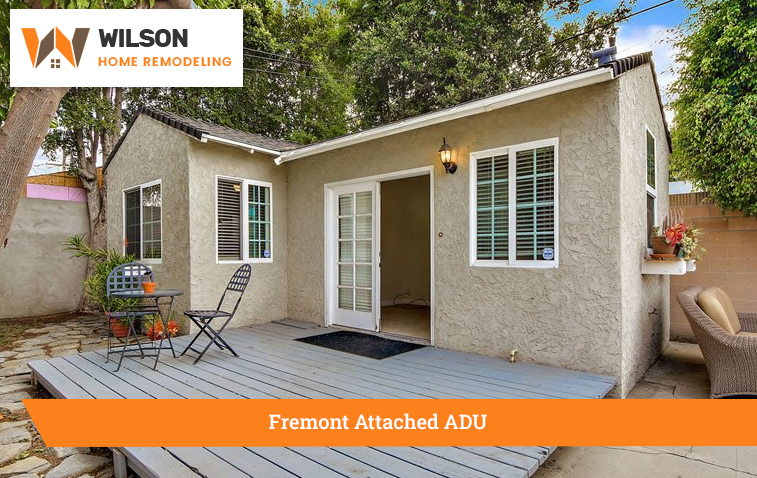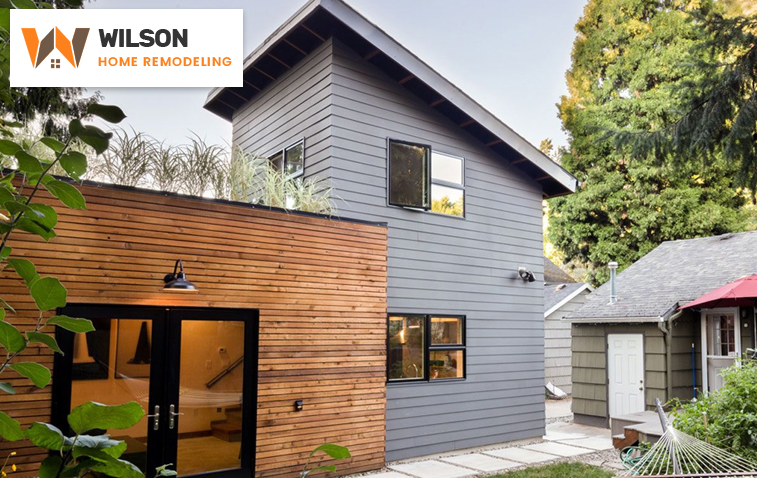Are you looking to expand your living space, accommodate family members, or earn rental income? An Attached Accessory Dwelling Unit (ADU) could be the perfect solution.
To ensure success, it is imperative to have a comprehensive grasp of zoning regulations, financing options, and adequate space utilization. Moreover, long-term factors such as maintenance are pivotal in safeguarding your investment.
In this blog post, we’ll delve into the process of designing and building an attached ADU that aligns with your needs and budget. You’ll find all the information you need to get your project off the ground.

An Accessory Dwelling Unit (ADU), often referred to as a secondary suite, in-law suite, or granny flat, is a smaller, independent residential dwelling located on the same lot as a standalone, single-family home. ADUs can come in different forms, with an attached ADU being built onto the existing house. This could mean converting a part of the house, like a garage or basement, into a separate residence or adding to the home.
Despite being a separate unit, an ADU is part of the same property as the main house and cannot be bought or sold independently. Attached ADUs are an excellent way to use existing space efficiently, providing extra room for family or a potential source of rental income.
Before embarking on your Fremont attached ADU project, it’s essential to define your needs and budget clearly.
Begin by identifying the purpose of the ADU. Will it be a home for an aging relative, a rental property, or extra space? This will guide decisions regarding the layout and amenities of the ADU.
Next, establish a budget for the project. Consider construction costs, potential increases in property taxes, and ongoing maintenance costs. Be sure to include a contingency fund for unexpected expenses. Remember, an attached ADU can generate rental income, offsetting some of these costs.
Lastly, research the requirements and costs associated with permits and regulations in Fremont. This will help avoid any unexpected obstacles during the construction process.
The materials you select will directly influence the durability, maintenance requirements, and overall aesthetic appeal of your ADU. When choosing materials, consider not only their initial cost but also their longevity and the cost of upkeep.
For exterior finishes, consider using materials that are attractive and able to withstand Fremont’s climate. Consider options like vinyl siding for its cost-effectiveness and minimal maintenance or fiber-cement siding for its durability and resistance to termites and fire.
For the interior, think about your flooring choices. Hardwood can be a beautiful and warm option, but it may require more maintenance than laminate or vinyl, which can mimic the look of wood but offer more outstanding durability. Similarly, when choosing countertops, options range from high-end materials like granite or quartz to more budget-friendly choices like laminate.
The choice of materials should align with the style of the main house, the purpose of the ADU, and your budget. Consulting with Wilson Home Remodeling can provide valuable insight into the best materials for your specific needs and help you make the most of your Fremont-attached ADU project.
These standards, set by the local government, are in place to ensure the safety and structural integrity of buildings. They cover many factors, including, but not limited to, electrical setup, plumbing, construction materials, and accessibility requirements.
In Fremont, ADUs must meet specific zoning regulations such as lot size, unit size, parking, and setback requirements. Additionally, the California Building Standards Code (Title 24) outlines energy efficiency standards that your ADU must comply with. It’s essential to familiarize yourself with these regulations or work with a knowledgeable contractor to ensure your ADU meets all necessary codes and standards.
Non-compliance with building codes can lead to hefty fines and delays in your project, so it’s essential to get it right from the start.
Financing your ADU project can initially seem daunting, but having a well-thought-out financial plan can smooth the journey. Various financing options are available, each with its own set of advantages and considerations.
Home equity loans or lines of credit are popular methods that allow you to borrow against the value of your house. They often have lower interest rates compared to personal loans and offer the advantage of tax-deductible interest.
A construction loan for your home construction project. These loans, offered by banks and credit unions, provide funds as your project progresses.
Explore government-backed loans like FHA or VA loans for competitive rates. Local/state governments may offer grants or loans for ADUs, especially for low-income renters.
If your ADU project aims to generate rental income, this projected income can sometimes be factored into loan approvals, making it easier to secure financing.
When considering financing options, it’s crucial to consult a financial advisor or your bank. Understanding the repayment terms and ensuring they align with your long-term financial goals is vital.
Designing your Fremont attached ADU with space efficiency in mind can help maximize its potential and make it more livable. Here are a few tips to consider when planning your ADU:
Take advantage of your chance to upgrade your space. Let’s turn your dreams into reality today – Contact us for a free consultation and start your journey to a more beautiful home!

Maintaining your Accessory Dwelling Unit (ADU) involves several long-term considerations to prolong its lifespan and preserve its value. Regular maintenance checks are pivotal; inspecting the plumbing, electrical systems, and structural integrity can help identify potential issues early and prevent extensive repairs later.
Consider the durability of the materials used in your ADU. High-quality materials, though they may have a higher upfront cost, can lead to lower maintenance costs in the future. Other factors to consider include energy efficiency and sustainability. Regularly maintaining energy-efficient appliances, such as heating and cooling units, not only prolongs their lifespan but also preserves their efficiency, leading to lower utility bills.
Additionally, for rental properties, maintenance also includes tenant turnover tasks like cleaning, repainting, and repairing wear and tear. Remember to consider property management costs if you don’t live on-site. Lastly, regular exterior upkeep, such as paint, siding, and landscaping, can enhance curb appeal and property value.
Constructing an ADU on your Fremont property can provide numerous benefits, from increased living space to potential rental income. With proper planning, budgeting, and understanding of building codes and regulations, you can turn this project into a successful and valuable addition to your home.
Remember to consult with professionals like Wilson Home Remodeling for guidance and expertise throughout the process. And remember, long-term considerations such as maintenance to ensure your ADU remains a valuable asset for years to come.